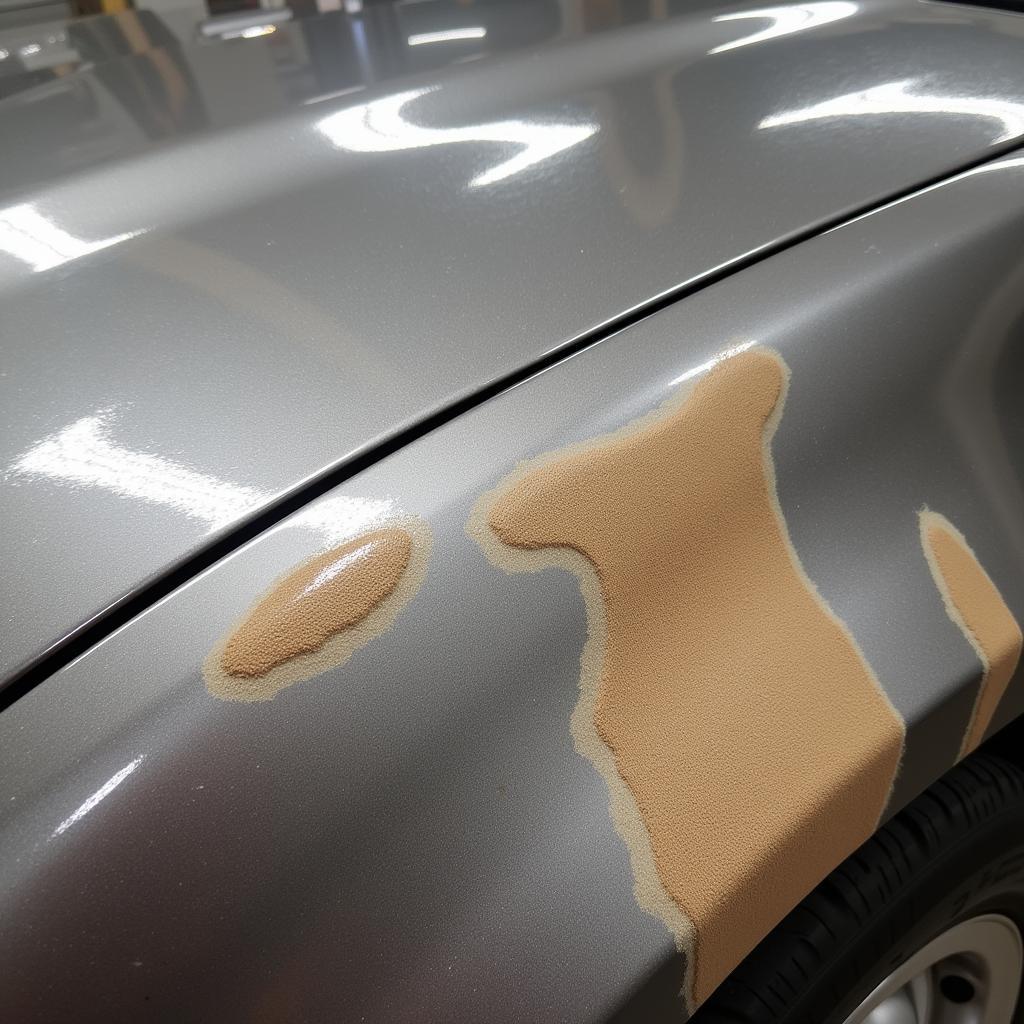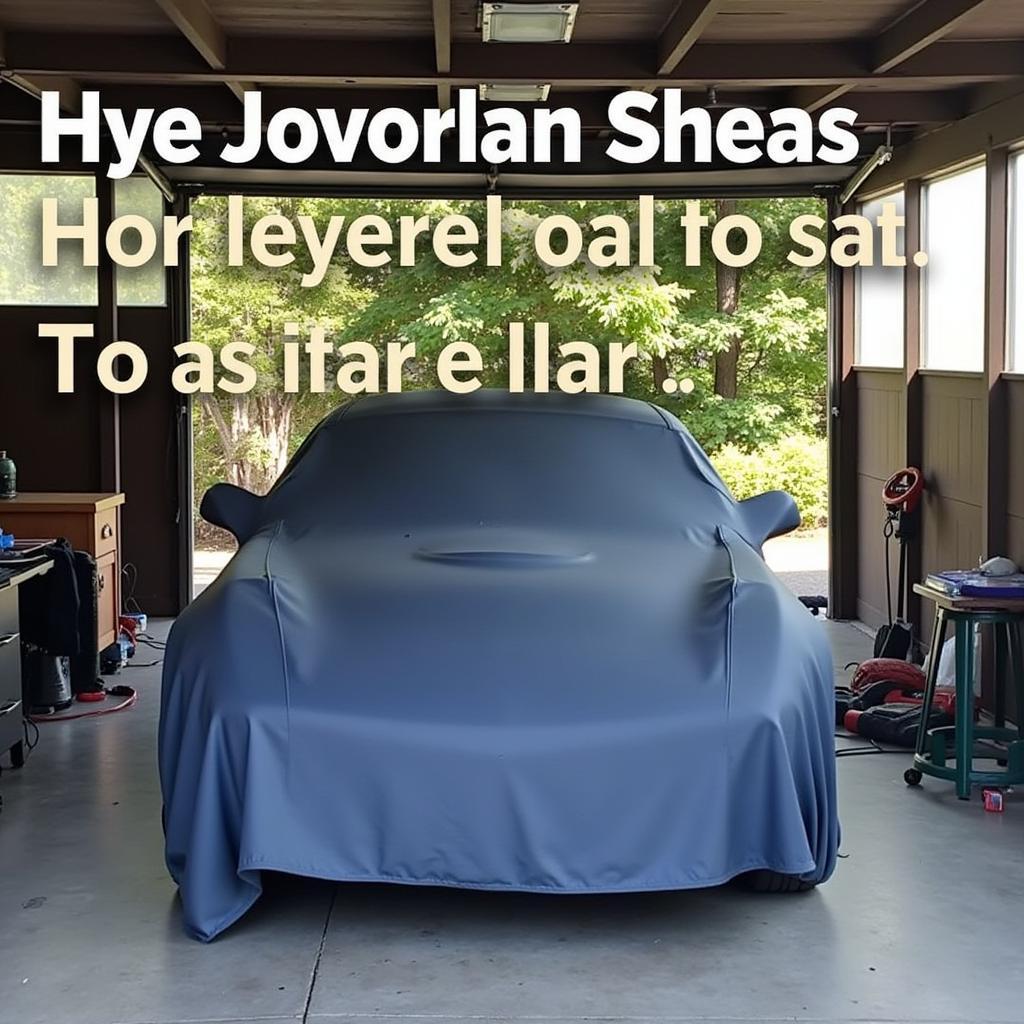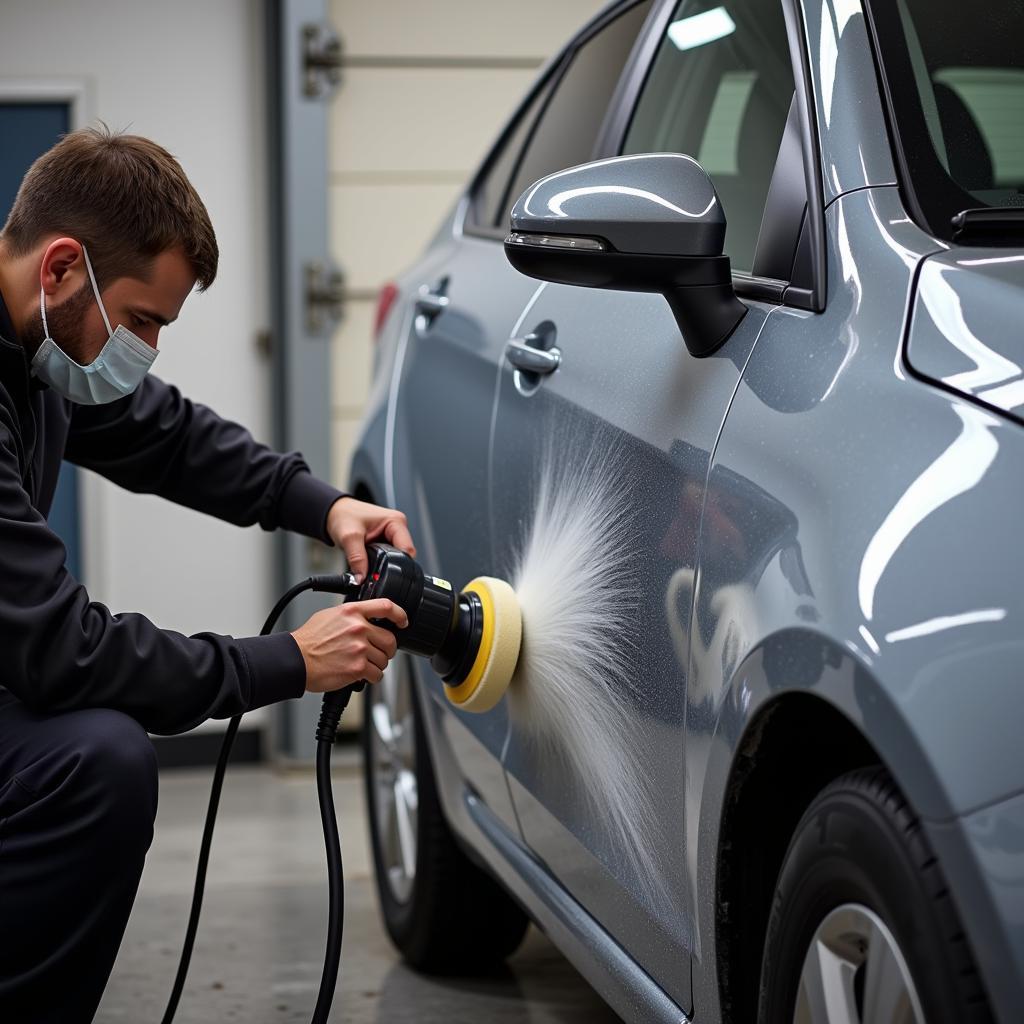Car Detailing Post Burning is a serious issue that can ruin a perfect detailing job. This article will cover the causes of paint burning during detailing, how to prevent it, and what to do if you accidentally scorch your car’s paint. We’ll delve into the techniques and products that can minimize the risk and restore your car’s finish.
Understanding the Causes of Car Detailing Post Burning
Scorched paint, often referred to as “burning” in the detailing world, happens when excessive heat is applied to the car’s paintwork. This can occur during various stages of detailing, particularly during polishing or compounding. High-speed rotary polishers generate significant heat through friction, and if not used correctly, this heat can damage the clear coat and even the base coat of the paint. Improper product selection, such as using abrasive compounds on delicate paint, can also contribute to burning. Direct sunlight exacerbates the issue, rapidly increasing the surface temperature of the car and making it more susceptible to burning.
 Car Paint Burn from Rotary Polisher
Car Paint Burn from Rotary Polisher
Preventing Paint Burn During Car Detailing
Prevention is always better than cure. Here are some crucial steps to take to avoid scorching your car’s paint:
- Proper Polisher Technique: Use the correct polishing technique, maintaining constant motion and avoiding dwelling on a single spot. Light pressure is key. Too much pressure generates excess heat.
- Suitable Products: Choose appropriate polishing pads and compounds for your car’s paint type and condition. Start with less aggressive products and gradually increase abrasiveness if needed.
- Work in the Shade: Direct sunlight is your enemy. Always detail your car in a shaded area or indoors to prevent the paint from overheating.
- Keep the Surface Cool: Regularly mist the polishing pad and the paint surface with a quick detailer or a dedicated lubricant to dissipate heat.
- Regular Pad Cleaning: A build-up of product and debris on the polishing pad can increase friction and heat. Clean your pads frequently during the detailing process.
- Practice on a Test Panel: If you’re unsure about a new product or technique, practice on a less visible area of the car first, such as a lower panel or inside the door jamb.
 Car Detailing in Shade for Burn Prevention
Car Detailing in Shade for Burn Prevention
What to Do if You Burn Your Car’s Paint
Despite your best efforts, accidents can happen. If you notice signs of paint burn, don’t panic. Assess the damage. Minor burns, affecting only the clear coat, can often be corrected with polishing or wet sanding. More severe burns, penetrating the base coat, might require professional intervention and repainting.
- Assess the Damage: Carefully inspect the affected area. Is it a light haze or a deeper discoloration?
- Try Polishing: For minor burns, use a fine polishing compound and a soft polishing pad to try and remove the damaged clear coat.
- Wet Sanding (for experienced detailers): If polishing doesn’t work, wet sanding might be an option, but it’s a delicate process and should only be attempted by experienced detailers.
- Consult a Professional: For deep burns or if you’re unsure about the repair process, consult a professional detailer or auto body shop.
 Car Paint Correction After Burn
Car Paint Correction After Burn
Conclusion
Car detailing post burning is a preventable issue. By understanding the causes and taking the necessary precautions, you can protect your car’s paint and achieve a flawless finish. Remember, proper technique, suitable products, and a cool working environment are key to avoiding this common detailing pitfall. If burning does occur, assess the damage and choose the appropriate corrective action, seeking professional help when necessary. With the right knowledge and approach, you can keep your car looking its best.
FAQs about Car Detailing Post Burning
-
What does burnt car paint look like? Burnt paint often appears dull, hazy, or discolored, sometimes with a swirl pattern.
-
Can I fix burnt car paint myself? Minor burns can sometimes be corrected with polishing or wet sanding, but deeper burns might require professional repair.
-
What type of polisher is less likely to burn paint? Dual-action polishers are generally safer than rotary polishers, as they generate less heat.
-
Is it safe to detail my car in direct sunlight? No, direct sunlight increases the risk of paint burning. Always detail in a shaded area or indoors.
-
What are the best products to prevent paint burning? High-quality polishing compounds and pads designed for your car’s paint type are essential.
Related Articles on CarDetailingUK
- Choosing the Right Polisher for Your Car
- The Ultimate Guide to Car Polishing
- Protecting Your Car’s Paint from the Elements
Need further assistance? Contact us via WhatsApp: +1(641)206-8880, or Email: [email protected]. Our customer support team is available 24/7.

Leave a Reply